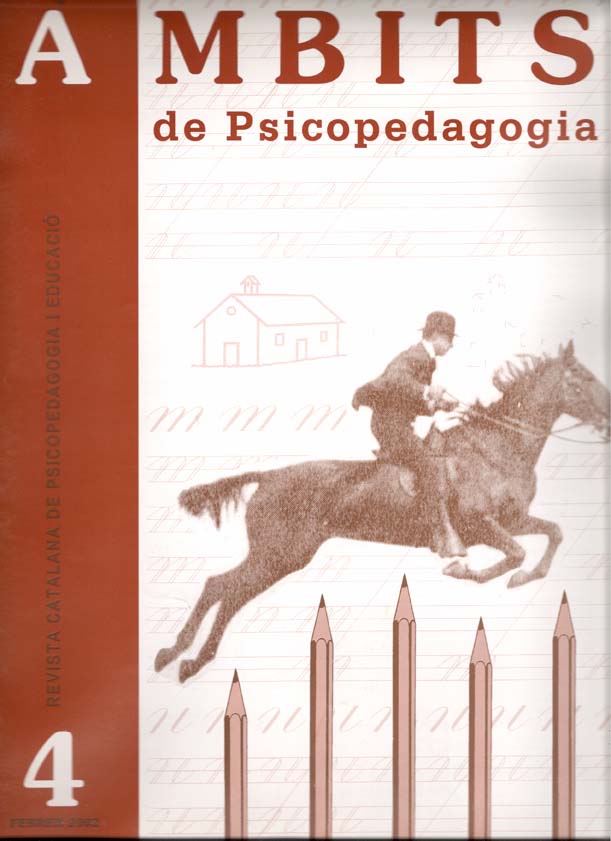La violencia ente iguales en la escuela: el Bullying
Resumen
.
Citas
Craig, W.M. (1998). The relationship among bullying, victimization, depression, anxiety and agression in elementary school children. Personality and Individual Differences, 24, pp. 123-130
Crick, N.R. and Bigbee, M.A. (1998). Relational and overt fors of peer victimization: A multiinformand aproach. Journal of Consulting and Clinical Psychology, 66, 337-347.
Espelage, D., Asidao, C.S., and Vion, S. (1999). APA’s 1999 Annual Convention, aug 20-24 Boston. http://apa.org/monitor/oct99/cf3.html
Farrington, D.P. (1993). Understanding and preventing bullying. In Crime and Justice. Vol 17, M. Tonry (Ed.). Chicago: University Chicago Press, pp. 381-458.
Hodges, E.V.E. and Perry, D.G. (Fall, 1996) Victimization is never just child's play. National School Safety Center News Journal, 4-7.
Kaltiala-Heino, R., Rimpelä, M., Rantanen, P., and Rimpelä, A. (2000). Bullying at school-an indicator of adolescents at risk for mental disorders. Journal of Adolescence, 23, 661-674.
Kumpulainen, K., Räsänen, E., Henttonen, I. (1999). Children involved in bullying: psychological disturbance and the persistence of the involvement. Child Abuse and Neglect, 23, pp. 1253-1262.
Kumpulainen, K., Räsänen, E., Henttonen, I., Almqvist, F., Kresanov, K., Linna, S.L., Moilanen, I., Piha, J., Purra, K., and Tamminen, T. (1998). Bullying and psychiatric symptoms among elementary school-age children. Child Abuse and Neglect, 22, pp. 705-717.
Olweus, D., (1983). Low school achievement and agressive behaviour in adolescent boys. En D. Magnusson y V. Allen (Eds.). Human development. An interactional perspective. New York: Academic Press, pp. 353-365.
Ortega, R. (1992). Relaciones interpersonales en la educación. El problema de la violencia escolar en el siglo que viene. Revista de Educación y Cultura, 14, pp. 23-26.
Pope, A. (2000) www.aboutourkids.org/articles/bullies.html
Wolke, D., Woods, S., Bloomfield, L., and Karstadt, L. (2000). The association between Direct and Relational Bullying and Behaviour Problems among Primary School Children. J. Child Psychol. Psychiat. Vol 41, no. 8, pp. 989-1002.
Crick, N.R. and Bigbee, M.A. (1998). Relational and overt fors of peer victimization: A multiinformand aproach. Journal of Consulting and Clinical Psychology, 66, 337-347.
Espelage, D., Asidao, C.S., and Vion, S. (1999). APA’s 1999 Annual Convention, aug 20-24 Boston. http://apa.org/monitor/oct99/cf3.html
Farrington, D.P. (1993). Understanding and preventing bullying. In Crime and Justice. Vol 17, M. Tonry (Ed.). Chicago: University Chicago Press, pp. 381-458.
Hodges, E.V.E. and Perry, D.G. (Fall, 1996) Victimization is never just child's play. National School Safety Center News Journal, 4-7.
Kaltiala-Heino, R., Rimpelä, M., Rantanen, P., and Rimpelä, A. (2000). Bullying at school-an indicator of adolescents at risk for mental disorders. Journal of Adolescence, 23, 661-674.
Kumpulainen, K., Räsänen, E., Henttonen, I. (1999). Children involved in bullying: psychological disturbance and the persistence of the involvement. Child Abuse and Neglect, 23, pp. 1253-1262.
Kumpulainen, K., Räsänen, E., Henttonen, I., Almqvist, F., Kresanov, K., Linna, S.L., Moilanen, I., Piha, J., Purra, K., and Tamminen, T. (1998). Bullying and psychiatric symptoms among elementary school-age children. Child Abuse and Neglect, 22, pp. 705-717.
Olweus, D., (1983). Low school achievement and agressive behaviour in adolescent boys. En D. Magnusson y V. Allen (Eds.). Human development. An interactional perspective. New York: Academic Press, pp. 353-365.
Ortega, R. (1992). Relaciones interpersonales en la educación. El problema de la violencia escolar en el siglo que viene. Revista de Educación y Cultura, 14, pp. 23-26.
Pope, A. (2000) www.aboutourkids.org/articles/bullies.html
Wolke, D., Woods, S., Bloomfield, L., and Karstadt, L. (2000). The association between Direct and Relational Bullying and Behaviour Problems among Primary School Children. J. Child Psychol. Psychiat. Vol 41, no. 8, pp. 989-1002.
Descargas
Publicado
15.02.2002
Número
Sección
Psicopedagogía y Orientación
Licencia
Los autores/as conservan los derechos de autor y conceden a la revista el derecho de primera publicación de la obra, registrada bajo una licencia Creative Commons Reconeixement-NoComercial-Sense Obra Derivada. Esta licencia permite la descarga de las obras y que se puedan compartir con otros siempre que se reconozca la autoría, pero no permite que se modifiquen de ninguna forma ni ser utilizadas con finalidad comercial.















